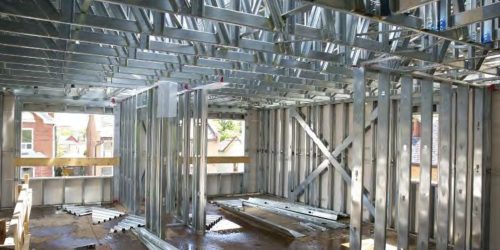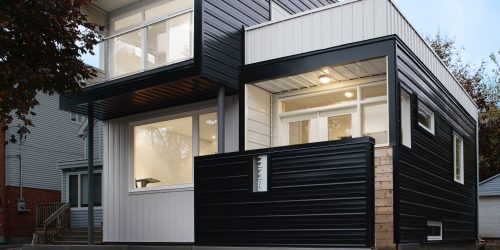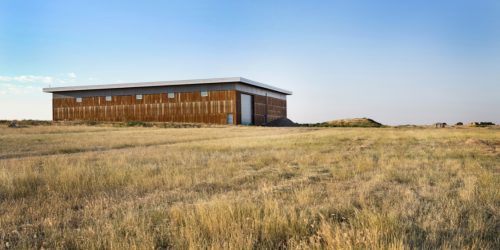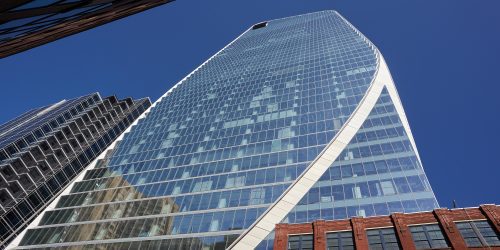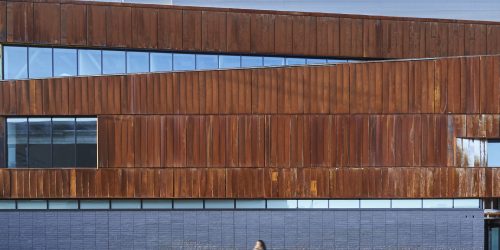Saguenay’s Steel Soccer Stadium a Perfect Goal
New Stade de Soccer Saguenay integrates prefab panels and local flair
Story: Ian VanDuzer
Photography: Marc Andre Couture

It’s late at night on a crisp, fall Wednesday, and a few tired parents trudge back to their minivans, their children bouncing around them in jerseys and long socks, soccer cleats hanging off their shoulders. Behind them shines the new Stade de Soccer Saguenay, a tall mixture of steel, gray metals, and glass in the middle of a Smart Centre shopping plaza.
It’s a new experience for the citizens here - the sports complex only opened on September 5th, just after Labour Day - but it will soon be a familiar one. With multiple soccer fields, a running track, and batting cages, as well as stadium seating for 150 spectators, the Stade de Soccer is positioned to be a new centre of Saguenay life and recreation for years and years to come.
“Sports complexes are so much more than a building,” says Genevieve Filteau, a Development Manager at Honco Steel Buildings, general contractors of the new recreation centre. “The sports complex is the new church of the town,” she says.
That may seem like a bold statement, but Filteau’s logic is sound. Between practices and games, there will always be someone playing in the Stade de Soccer. It’s a gathering place for the entire community: for children to play together and make friendships and rivalries, to experience shared triumph and disappointment; and for parents, too, to experience community with each other, watching their kids fulfill their dreams while growing up.
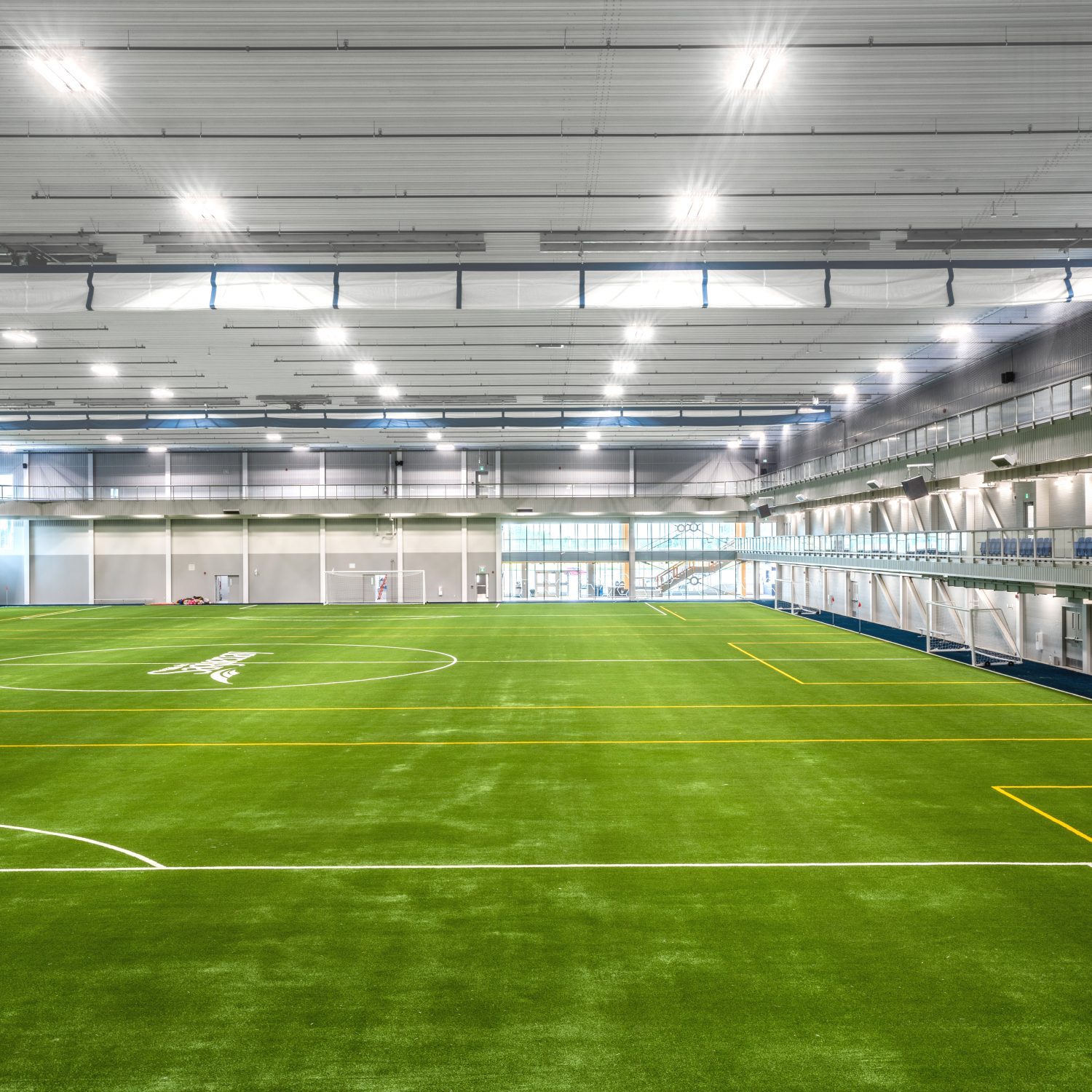
Home From Away
Honco is not based in Saguenay. Their headquarters is just south of the St. Lawrence River, across from Quebec City (they also have offices in Montreal). Even still, the Quebec-based builders and steel panel manufacturers have made sports complexes and pre-fabricated steel buildings their bread and butter, with more than a hundred recreational centres built across Quebec and Ontario.
And yet, the Stade de Soccer Saguenay is a unique building that belongs in and reflects the city. That’s not an accident, according to Filteau. “Parents will spend hundreds or thousands of hours at these buildings with their kids,” Filteau says. “It’s important that everyone has their say in what goes into a sports complex.”
To that end, Honco integrates local designs and materials into their projects so that the community is reflected in the final product. “The focus that we have when we go into a project, we try to make sure that it represents the community that it’s going to be located in.”
For Stade de Soccer Saguenay, that meant building a glass-and-aluminum stairway to the complex’s upper floor, as well as exposed wood accents and features throughout the centre. These materials reflect the local economy: approximately one third of all aluminum produced in Canada originates in Saguenay, and the region to this day has a thriving lumber industry.
Even though Honco is a steel company, Filteau wants it to be known that she doesn’t have anything against other materials. ”I think that every material is noble, and every material has its place in construction,” Filteau assures, seriously. “When you come to a sports complex, or a representation of a community, you need to be representative of it. So this is how we do it.”
“We welcome diversity in our construction materials and our communities, actually.”
Local means more than just sourcing familiar materials, Filteau says. Depending on the project, Honco can use up to 95% local labour for construction. “So, the members of the community build their own complex,” she says. “It’s another way for them to have ownership.”
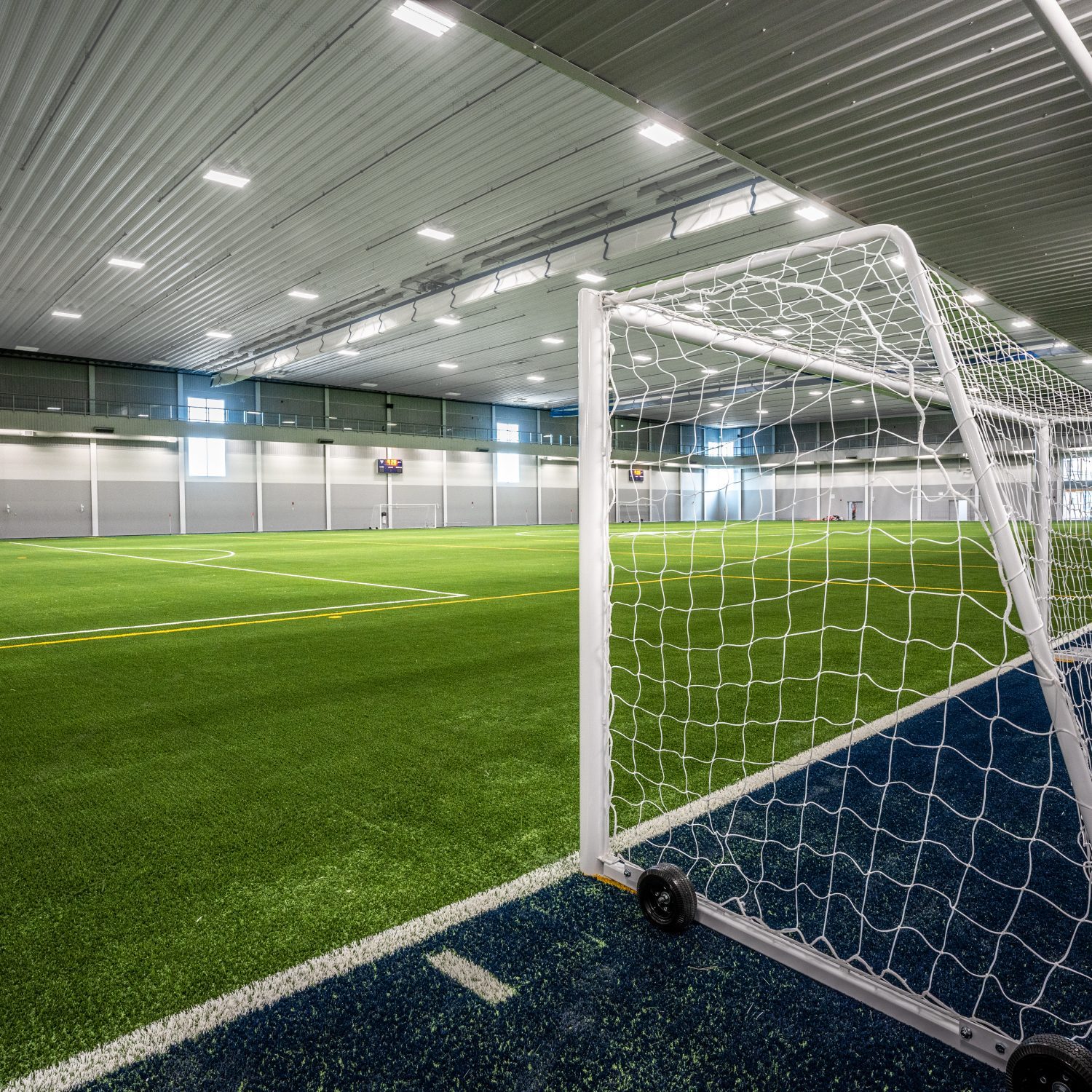
Up Top and All Around
That level of local labour is possible thanks to the extensive use of prefabricated steel panels in Honco’s designs. While entrances and spectator areas utilize local accents to add flair to the design, the main space of the building - comprising the soccer fields and running track - is encompassed by steel panels bolted together for quick and easy assembly.
When constructed, the panels themselves create structural strength, meaning that fewer resources need to go towards the foundation. That cuts down on construction time, as well as cost of materials while ensuring that the building is strong enough to withstand both the elements and wear and tear.
But a key facet of any Honco sports complex is the roof. Also made of light-gauge steel panels, the roof is sealed against any amount of rain and snow that Mother Nature can throw at it - a necessity in any part of Canada, but especially north of Quebec City. Inside, the ceiling of the recreational space also adds structural strength to the building’s walls.
“What you have to understand is, there are no structural elements around the perimeter walls. It’s really just metal cladding,” Filteau explains. “So you don’t have a separate installation team that’s coming back to install the roof. Everything is done at once. So for the construction timeline, it’s incredibly efficient.”
Efficiency for Honco doesn’t end the moment construction is complete, though. The roof and ceiling are designed to be as energy-efficient as possible. Heating such large spaces efficiently is always a challenge, and so Honco relies on the steel itself to help with the climate control efforts. The roof reflects heat through radiation, keeping the interior cooler during the summer, while the ceiling segments the building’s total volume, creating (comparatively) smaller spaces that are more efficient to heat and cool.
Honco follows up their efficient steel design with 8 inches of continuous insulation around the perimeter. “Because we only use panels, we don’t have any thermal bridges,” Filteau says. “That means it’s not a pinch insulation, it’s just continuous insulation.” As a result, Honco estimates that their designs cut building annual operations costs by 30%.

Light, Reflection, Windows
There may be another reason why Filteau compares Honco’s sports complexes to churches: light. Grand cathedrals, built in centuries before modern electric lights, used giant windows and reflective surfaces to illuminate their interiors. While the Stade de Soccer Saguenay has electric lights, they use the same basic principles in their design, says Filteau.
“When you go inside a Honco building, you can tell,” Filteau beams. “It’s so bright!”
Instead of relying on fluorescent bulbs to fill giant playing fields with light, Honco uses a Galvalume coating on its ceiling panels. Galvalume - a mixture of aluminum, zinc, and silicone - creates a reflective surface that bounces light around the space. The result is a shining example of efficiency and smart design: by using Galvalume, Honco can cut down on electricity costs - as well as all those lightbulbs that no longer need to be changed!
In terms of what it’s meant to do, Galvalume steel fits Honco’s needs perfectly. It’s no wonder why the coated steel features prominently in their sports complexes.
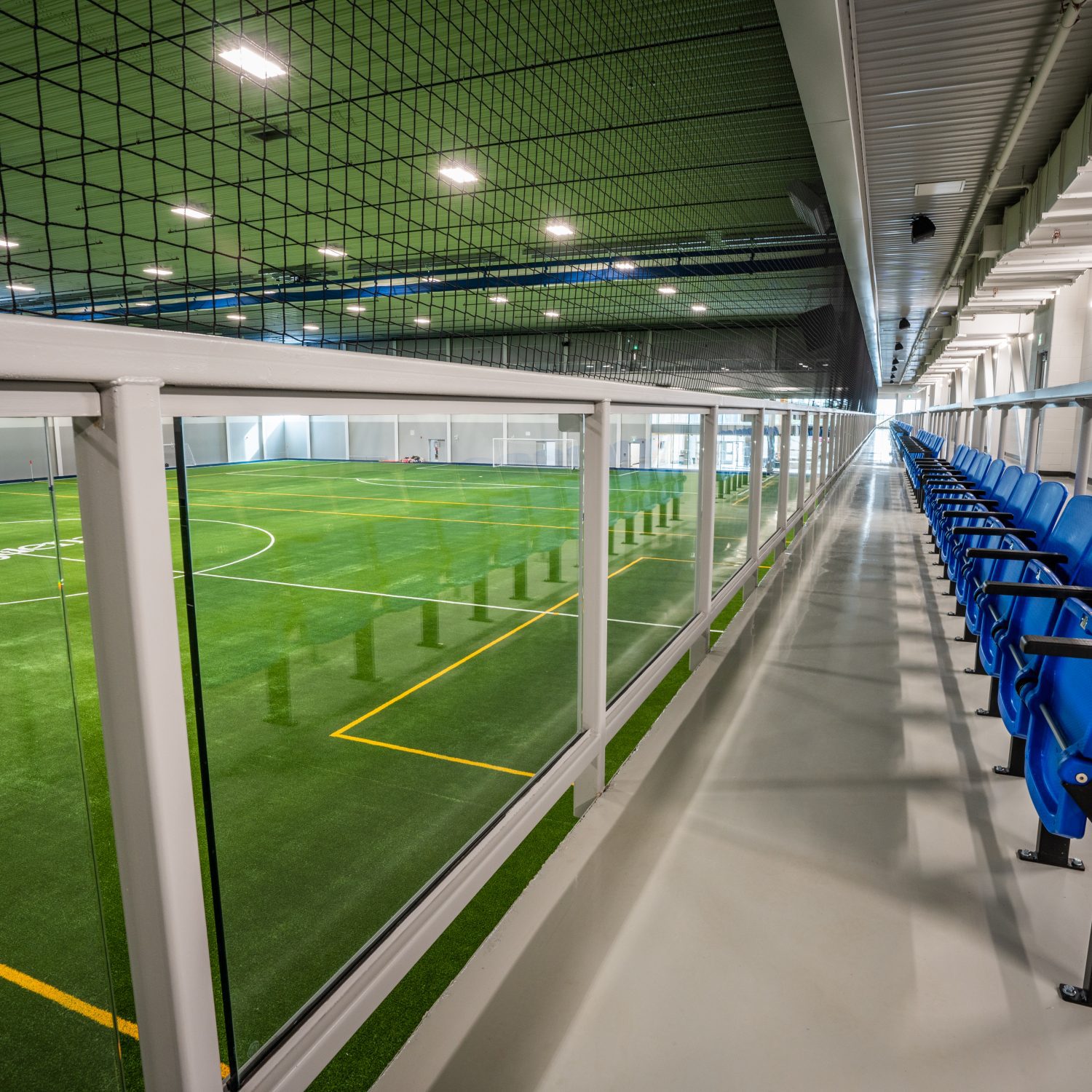
Thinking Outside the Box
Filteau says that there’s a preconception when you hear “prefab” that you’re going to end up with a giant steel box, but she says Honco strives to challenge that idea. “Sometimes, architects think that prefab restrains their imagination, but I would say it’s quite the contrary” Filteau laughs. “If you have a good imagination, you can make something really special!”
“I think there needs to be a lot more education in order to understand the values of prefab.”
Looking at the Stade de Soccer Saguenay, with its beautiful wood accents highlighting gleaming, reflective steel, you can see why she thinks the way she does.

Specifications
BUILDING OWNER/PROJECT COMMISSIONER:
City of Saguenay
ARCHITECT:
Bilodeau, Baril, Leeming Architectes // architectes.ca
GENERAL CONTRACTOR:
Honco Buildings // honcobuildings.com
SUPPLIERS, FABRICATORS, INSTALLERS:
Honco Buildings // honcobuildings.com
PHOTOGRAPHY:
Marc Andre Couture // macphotographie.com
PRODUCT:


